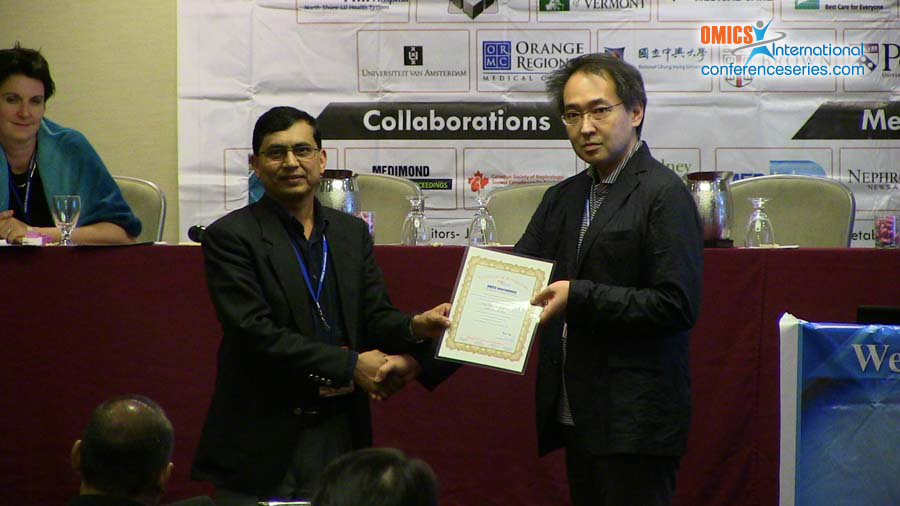Qilian Xie
Anhui Provincial Children\\\'s Hospital, China
Title: Accompanying mild hypothermia significantly improved the prognosis of septic mice than artificial mild hypothermia
Biography
Biography: Qilian Xie
Abstract
Some patients with sepsis are found with accompanying mild hypothermia (ACMH); however, the effects of ACMH on the patients with sepsis are poorly understood. Endotoxin plays a very important role in the pathogenesis of sepsis caused by the Gramnegative bacterial infections; in addition, lipopolysaccharide (LPS) could also induce hypothermic reactions in rodents. Hence, in the our study, intraperitoneal injection of LPS was performed to induce sepsis in BALB/c mice, and then the mice were divided into different groups, namely accompanying mild hypothermia(ACMH), un-hypothermia (UH), keep normothermia (KN), and artificial mild hypothermia (ATMH) groups, according to the anal temperature and the thermic intervention strategy. After injected LPS, mice might gradually appear rectal temperature changes. According to the monitoring results of rectal temperature changes 1 hour after LPS injection, the mice were subdivided into the accompanying hypothermia group (rectal temperature ≤36) and the non-hypothermia group (rectal temperature>36). In the accompanying hypothermia group, because the therapeutic range of hypothermia was 32~34, our experiment set the range of mild hypothermia as 34~36 , so the mice with rectal temperature below 34 were removed, and those with rectal temperature within 34-36 were retained, and the latter were then randomly divided into the accompanying mild hypothermia group (ACMH)) and the keep normothermia group (KN)), group ACMH did not perform any temperature intervention, while group KN was placed into incubator to maintain the rectal temperature within 36.0-37.5, aiming to simulate the thermal treatment towards clinical mild hypothermic patients. In the non- hypothermia group, mice were randomly divided into the un-hypothermia group (UH) and the artificial mild hypothermia group (ATMH), group UH did not perform any temperature intervention, while group ATMH was placed into hypothermic blanket to maintain mice’s rectal temperature as 34-36, aiming to simulate clinical mild hypothermia temperature towards the patients with normal or fever. Artificial mild hypothermia and normothermia-keeping treatments were performed with the speed as 0.5/h. The mortality rate, serum levels of tumor necrosis factor-alpha (TNF-α), interferon-gamma (IFN-γ), and interleukin (IL)-4 and liver and renal functions of the mice in each group were recorded. Liver, lung, and renal tissues of the mice were stained and examined under optic microscope. Our study is to compare the impacts of ACMH and artificial mild hypothermia (ATMH) on mortality, systemic inflammatory reactions and organ functions in mice with sepsis. In this study we found the mortality rate in the ACMH group was the lowest among all the sepsis groups. Increased serum levels of TNF-α, IFN-γ, and IL-4 and impairments of the liver and renal functions were found in the septic mice. The serum levels of TNF-α, IFN-γ, and IL-4 were significantly lower and the liver and renal functions of ACMH group were not impaired significantly as compared with other sepsis groups. Pathological examinations of the lung, liver, and renal tissues showed that ACMH group were with the lowest pathological score among all the sepsis groups, so ACMH and ATMH could both reduce mortalities in mice with sepsis, and ACMH could reduce mortality even lower, and more alleviate systemic inflammatory responses, and the damages in lung, kidney and other organs were lighter.
Speaker Presentations
Speaker PDFs
Speaker PPTs Click Here


